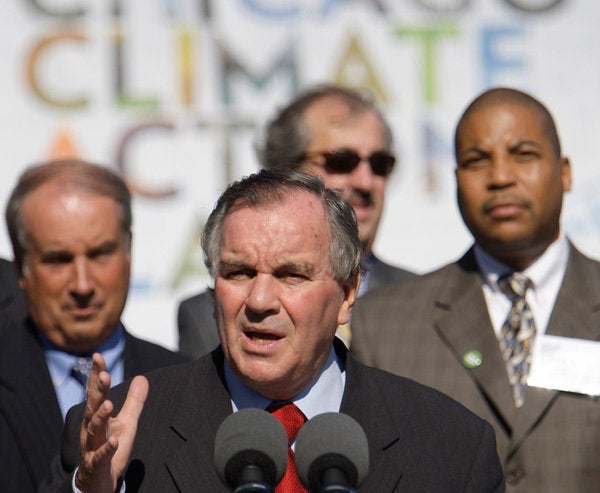
Ironically, the most ambitious U.S. action in the fight against global warming is coming from big cities and their mayors.
It seems preposterous on its face. Each city's emissions are only a tiny fraction of the global pie. Cities can't force utilities to shift to renewables, or make Detroit produce smarter cars.
Nonetheless, some of the biggest U.S. mega-cities are stepping up in a big way on global warming:
- In San Francisco: Mayor Gavin Newsome committed his city to reduce emissions 20% below 1990 levels by 2012 using everything from zero emission public transit to LED streetlights.
- In New York City: Bloomberg called for 30% cuts from current emissions by 2030 (and 2017 for municipal operations) and supplanting the Manhattan skyline's quaint rooftop water tanks with wind turbines.
- In Chicago: earlier this month, Mayor Daley announced a detailed and comprehensive program to reduce Chicago's emissions 25% below 1990 levels by 2020, noting that at today's energy prices this is a cost cutting program for Chicagoans. The Mayor observed "We can't solve the world's climate change problem in Chicago, but we can do our part."
In addition, more than 884 cities to date have signed on to the U.S. Conference of Mayors Climate Protection Agreement, under which they aspire to "meet or beat" the Kyoto Protocol emissions targets.
Cities, of course, are critical to any global challenge. More than half the world's population is now urban, and cities consume 75% of the world's energy while producing 80% of greenhouse gas emissions.
The question is: why are cities stepping up the plate, while Congress continues to drag its feet? Here are three possible reasons:
First, cities are on the front lines of global warming scenarios that increasingly look all too real. When natural disasters such as floods, hurricanes, and sustained heat waves strike, dense population centers--and their mayors--feel the most pain. Ask Galveston Mayor Lyda Ann Thomas--or New Orleans Mayor Ray Nagin. That's why New York City's climate change action plan includes both disaster planning and long-term adaptation.
Second, cities see big opportunities. Strong energy and building efficiency codes make cities more competitive, and attractive to companies looking to save costs. Public transit and low-emission vehicles make cities cleaner and less congested. Anti-sprawl planning not only saves energy, it makes metropolitan areas more attractive and protects the property tax base. And new, green city infrastructure means lots of new, green jobs, and new businesses moving in. As any mayor will tell you, jobs (and the tax base that comes with them) are the life-blood of City Hall. Cities compete fiercely for jobs and new enterprise. Getting serious about global warming gives them a first-mover advantage.
Finally, mayors are close to their voters. They hear that people want action on energy and climate. At the city level, political success means getting things done.
Congress: are you listening?
